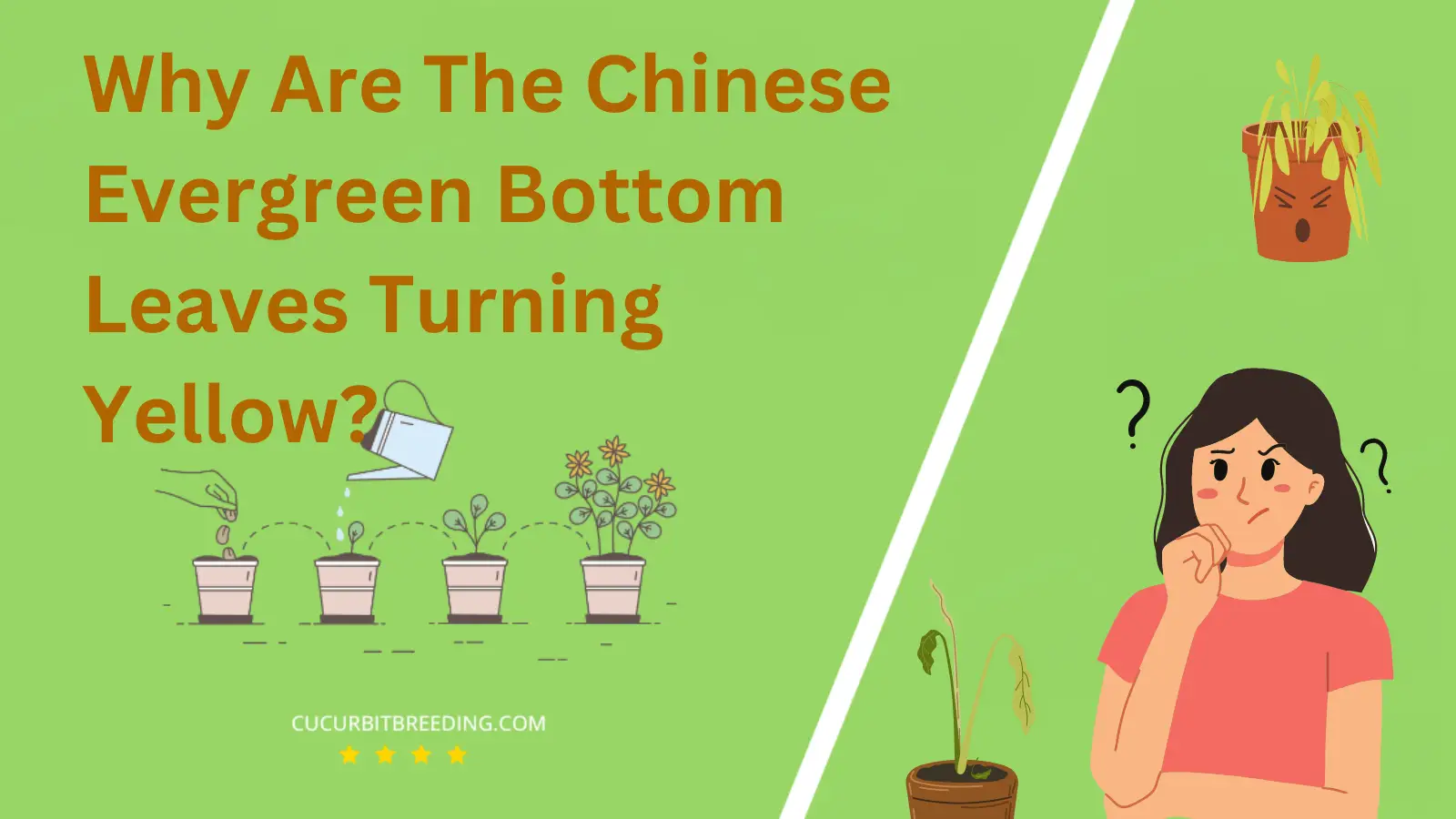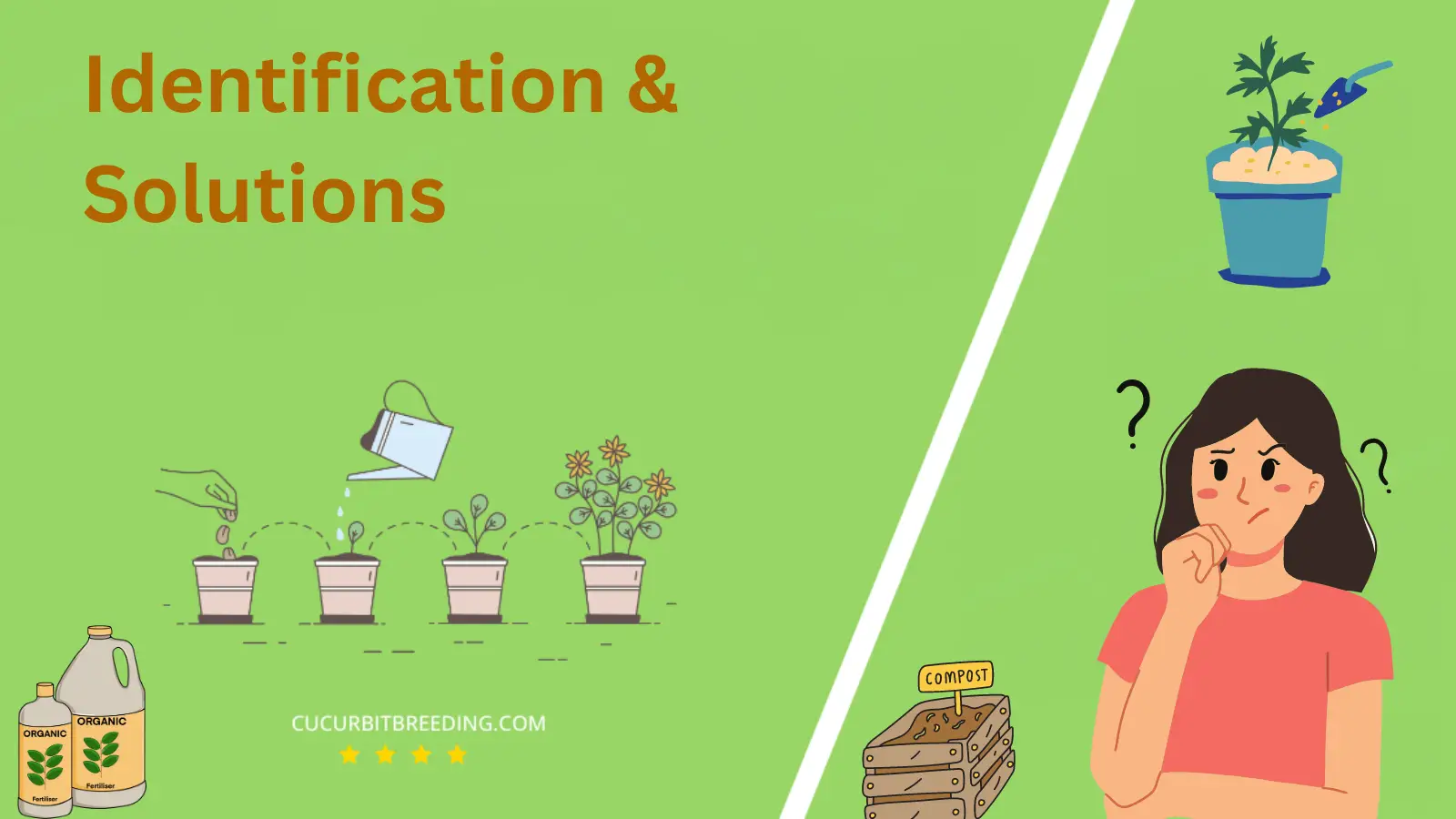
Noticing that your Chinese Evergreen’s bottom leaves are turning yellow can be worrying. This beautiful and popular indoor plant is known for its hardiness, so any sign of stress is sure to cause concern for any caring gardener.
There are multiple potential culprits behind this disheartening observation, and understanding them can be vital to your plant’s health. Let’s unravel the mystery behind this puzzling situation and restore the vitality of your prized greenery.
Why Are The Chinese Evergreen Bottom Leaves Turning Yellow?
1. Overwatering
| Description | causes excess water in the roots, preventing proper absorption of nutrients, leading to yellowing leaves. |
|---|---|
| Solution | Reduce watering and allow soil to dry out between waterings to prevent root rot. |
Chinese evergreen plants are sensitive to water conditions. Overwatering can lead to root rot or fungal issues, which can cause the bottom leaves to turn yellow.
Solution: Firstly, check your watering routine. Make sure you’re not giving the plant too much water. The soil should be slightly damp to the touch, but not soaking wet. You can also improve drainage by using well-draining soil and ensuring there are holes in the bottom of your pot to allow excess water to escape.
Addressing root rot: If overwatering has led to root rot, you may need to repot the plant. Remove the plant from its pot, gently clean away the affected (rotted) roots, and repot it into fresh, well-draining soil.
Preventing further incidents: To prevent yellow leaves in the future, grant your Chinese evergreen a balanced environment. This includes maintaining a consistent watering schedule and providing your plant with adequate light – but not direct sunlight plus maintaining a humidity level that suits this plant’s natural habitat.
2. Underwatering
| Description | causes water deficiency in roots, reducing nutrient absorption and chlorophyll production, resulting in yellowing leaves. |
|---|---|
| Solution | Increase watering frequency or amount to provide adequate hydration to the plant’s root system. |
The Chinese Evergreen plant, also known as Aglaonema, is a resilient and low-maintenance houseplant. However, it can often struggle if it’s consistently under-watered.
Underwatering and its Effects
Underwatering essentially leads to dehydration for the plant, causing the lower leaves to turn yellow as the plant attempts to conserve water. Once this occurs, the plant’s overall health starts to decline, reflecting in the discoloration and wilting of leaves.
Addressing Underwatering
To address this issue, pay close attention to the watering needs of your Chinese evergreen. This plant prefers a damp, but not soggy, environment. Therefore, before watering, touch the topsoil to gauge its moisture level. If it feels dry, then it is a sign to water your plant. In addition, ensure your plant’s pot has proper drainage to avoid waterlogging. Over time, balanced watering will help to restore its vibrant green leaves. Also, consider using a moisture meter to make sure the soil is not too dry, readjust the plant watering schedule if necessary.
Final Thoughts
Creating an optimal watering routine is key for the health and longevity of your Chinese evergreen. By correcting underwatering issues, you are ensuring your plant gets the necessary hydration for robust growth and vibrant leaves.
3. Nutrient deficiency
| Description | The Chinese evergreen’s bottom leaves turn yellow due to nutrient deficiency, specifically lacking essential minerals. |
|---|---|
| Solution | Provide balanced fertilizer to address nutrient deficiency, promoting healthy foliage and preventing yellowing of bottom leaves. |
The yellowing of your Chinese evergreen’s bottom leaves could be due to a nutrient deficiency. This means that your plant is not getting enough of the necessary nutrients it needs to thrive. Most commonly, this can be due to a lack of nitrogen, which is essential for promoting healthy green growth.
Solution: To resolve this issue, try supplementing your plant’s care regimen with a balanced, slow-release fertilizer. Look for a solution that contains all necessary macro and micronutrients. Depending on the specific nutrient that your plant is lacking, a targeted fertilizer may be necessary.
When feeding your Chinese evergreen, remember, it’s usually best to err on the side of too little rather than too much – over-fertilization can lead to over-salination of the soil and further damage to the plant. Always follow the fertilizer instructions thoroughly, and keep an eye on how your plant responds over the next few weeks.
Remember, regular soil testing can be another useful tool when it comes to diagnosing and addressing nutrient imbalances. Soil testing will enable you to get a clearer picture of what nutrients your plant’s soil currently contains and what might be missing. From there, you can make more educated decisions about how to care for your plant.
4. Pests or diseases
| Description | The Chinese evergreen’s bottom leaves turn yellow due to nutrient deficiency, specifically lacking essential minerals. |
|---|---|
| Solution | Provide balanced fertilizer to address nutrient deficiency, promoting healthy foliage and preventing yellowing of bottom leaves. |
The yellowing of the bottom leaves on a Chinese Evergreen may indicate a problem with pests or diseases. Several pests such as spider mites, aphids or mealybugs can feed on the leaves and suck out their juices, causing them to turn yellow. Similarly, diseases such as root rot or leaf spot disease can also cause yellowing.
Resolving pest issues involves a few steps. First, isolate the infected plant to prevent pests from spreading to other plants. Then, attempt to physically remove the pests from the plant. This can be done using a damp cloth or a soft brush. If infestation persists, consider using an appropriate insecticide or pest control spray.
For diseases, improve the plant’s growing conditions. Ensure the plant is in well-drained soil and is not waterlogged, as this can lead to root rot. If the disease is severe, remove and dispose of the affected leaves or parts of the plant. In some cases, fungicides are necessary for treatment. It is advisable to consult with a plant health professional for appropriate disease management strategies.

5. Excessive direct sunlight
| Description | Provide balanced fertilizer to address nutrient deficiency, promoting healthy foliage and preventing yellowing of bottom leaves. |
|---|---|
| Solution | Provide shade or move plant to a spot with indirect sunlight to prevent yellowing of bottom leaves. |
The Chinese Evergreen, or Aglaonema, is a popular houseplant known for its hardy nature. This plant prefers low to medium light and its leaves can turn yellow if the plant is exposed to excessive direct sunlight. The powerful rays of the sun can scorch the chlorophyll which is vital for photosynthesis, causing the leaves to yellow.
If your Chinese Evergreen is experiencing yellowing of its bottom leaves due to harsh sun exposure, you should reposition the plant immediately. Find a location with filtered or indirect light, such as near a north or east-facing window. If moving the plant away from the direct light is not possible, you can also shield the plant using a sheer curtain or blinds. Regularly checking your plant’s leaves for discoloration will help you catch any damage due to excessive light before it can spread and affect the overall health of your plant.
6. Environmental stress
| Description | such as nutrient deficiency or water imbalance can cause chlorophyll breakdown, leading to leaf yellowing. |
|---|---|
| Solution | Increase watering to maintain soil moisture and humidity, and ensure adequate indirect sunlight for photosynthesis. |
Yellowing leaves at the bottom of your Chinese Evergreen could be a sign of environmental stress. This typically happens when the plant has been exposed to unfavorable conditions for a prolonged period of time. Conditions such as sudden temperature changes, excessive light exposure, and insufficient or excess water can cause this phenomenon.
The plant reacts to this stress by diverting nutrients and energy away from the lower, older leaves to the upper, newer growth. This results in yellowing and eventually falling off of the affected leaves, a common survival mechanism for many plants.
As a solution, take steps to provide your Chinese Evergreen with a balanced and stable environment. Maintain a consistent temperature between 70-85 degrees Fahrenheit, keep it away from direct sunlight but in a well-lit area, and water it regularly. The soil should be kept moist, but not waterlogged. Moreover, avoid abrupt changes in the plant’s surroundings.
Remember that the yellow leaves will not turn green again. Hence, they should be pruned to allow the plant to concentrate its resources on new growth. If the yellowing starts to spread or the plant looks unhealthy, consider talking with a plant professional or experienced gardener to help diagnose and address any other potential issues.
7. Natural aging process
| Description | The natural aging process of leaves causes them to turn yellow due to reduced chlorophyll production. |
|---|---|
| Solution | Maintaining a healthy lifestyle with regular exercise and a balanced diet can slow down natural aging. |
The bottom leaves of your Chinese Evergreen are turning yellow primarily due to overwatering. When a plant receives more water than it can absorb, the roots become waterlogged. Waterlogged roots suffer from a lack of oxygen, leading to stress which shows in the yellowing of the leaves, particularly the lower ones, which are older and more prone to show signs of distress.
To rectify this situation, you should first allow the plant’s soil to dry out before watering it again.
Chinese Evergreens prefer lightly moist soil, but never overly damp. Employ a “less is more” approach to watering and consider using a pot with drainage holes to stop excess water from accumulating.
Additionally, use a well-draining soil mixture that can hold enough moisture without becoming soggy.
Regularly monitoring your plant’s watering needs, providing it with well-draining soil, and adequate ventilation for its roots can prevent the issue of yellowing leaves due to overwatering.